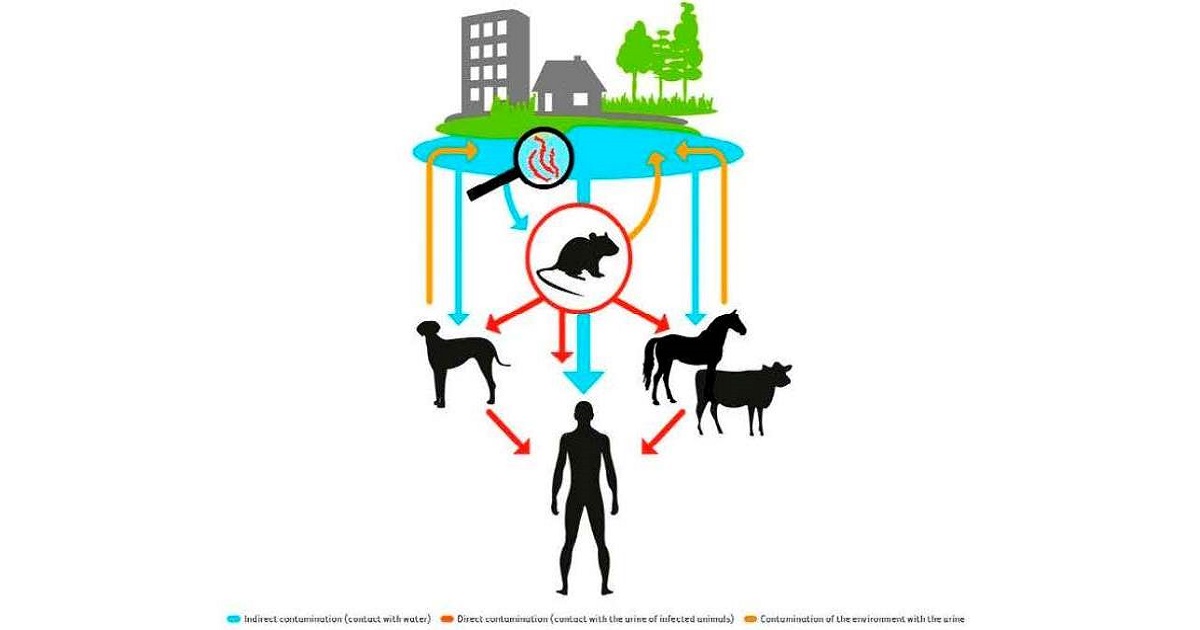- 2.6Impact Factor
- 4.7CiteScore
- 21 daysTime to First Decision
Leptospirosis and One Health Approach: Current Status and Future Prospects, 2nd Edition
This special issue belongs to the section “One Health“.
Special Issue Information
Dear Colleagues,
Leptospirosis is an emerging zoonotic disease of broad impact on animal production and public health that affects more than 1 million people, with 60,000 deaths per year. The infection has a strong environmental component, and exposure to soil or water contaminated with the urine of reservoir animals (mostly rodents) infected with pathogenic Leptospira is the most common way for humans or animals to contract leptospirosis. The ability of Leptospira to occupy various ecological niches suggests that the pathogen might have evolved from an environmental ancestor through the acquisition of new functions via lateral gene transfers associated with adaptation to new hosts.
In this context, studies focusing on the animal–human–environment interface are important to better understand the ecology of Leptospira in the natural environment and its interactions with animal and human populations, which will help the implementation of prevention and control efforts aimed at reducing the risk of infection.
The 2nd Edition of this Special Issue aims to address the current status and future prospects on leptospirosis in the context of a One Health approach, with a broad emphasis on the animal, human, and environment interface, and papers focusing on relevant aspects such as deeper understanding of the biodiversity of strains that can lead to infections in both humans and animals, Leptospira isolating from environmental samples, molecular epidemiology, improvement of diagnostic methods, and new epidemiological insights are particularly welcome. We invite the submission of reviews, reports, and original research articles.
Dr. Sérgio Santos de Azevedo
Dr. Clebert José Alves
Guest Editors
Manuscript Submission Information
Manuscripts should be submitted online at www.mdpi.com by registering and logging in to this website. Once you are registered, click here to go to the submission form. Manuscripts can be submitted until the deadline. All submissions that pass pre-check are peer-reviewed. Accepted papers will be published continuously in the journal (as soon as accepted) and will be listed together on the special issue website. Research articles, review articles as well as short communications are invited. For planned papers, a title and short abstract (about 250 words) can be sent to the Editorial Office for assessment.
Submitted manuscripts should not have been published previously, nor be under consideration for publication elsewhere (except conference proceedings papers). All manuscripts are thoroughly refereed through a single-blind peer-review process. A guide for authors and other relevant information for submission of manuscripts is available on the Instructions for Authors page. Tropical Medicine and Infectious Disease is an international peer-reviewed open access monthly journal published by MDPI.
Please visit the Instructions for Authors page before submitting a manuscript. The Article Processing Charge (APC) for publication in this open access journal is 2700 CHF (Swiss Francs). Submitted papers should be well formatted and use good English. Authors may use MDPI's English editing service prior to publication or during author revisions.
Keywords
- leptospirosis
- one health
- animal leptospirosis
- environment
- epidemiology
- control
- diagnosis

Benefits of Publishing in a Special Issue
- Ease of navigation: Grouping papers by topic helps scholars navigate broad scope journals more efficiently.
- Greater discoverability: Special Issues support the reach and impact of scientific research. Articles in Special Issues are more discoverable and cited more frequently.
- Expansion of research network: Special Issues facilitate connections among authors, fostering scientific collaborations.
- External promotion: Articles in Special Issues are often promoted through the journal's social media, increasing their visibility.
- e-Book format: Special Issues with more than 10 articles can be published as dedicated e-books, ensuring wide and rapid dissemination.

